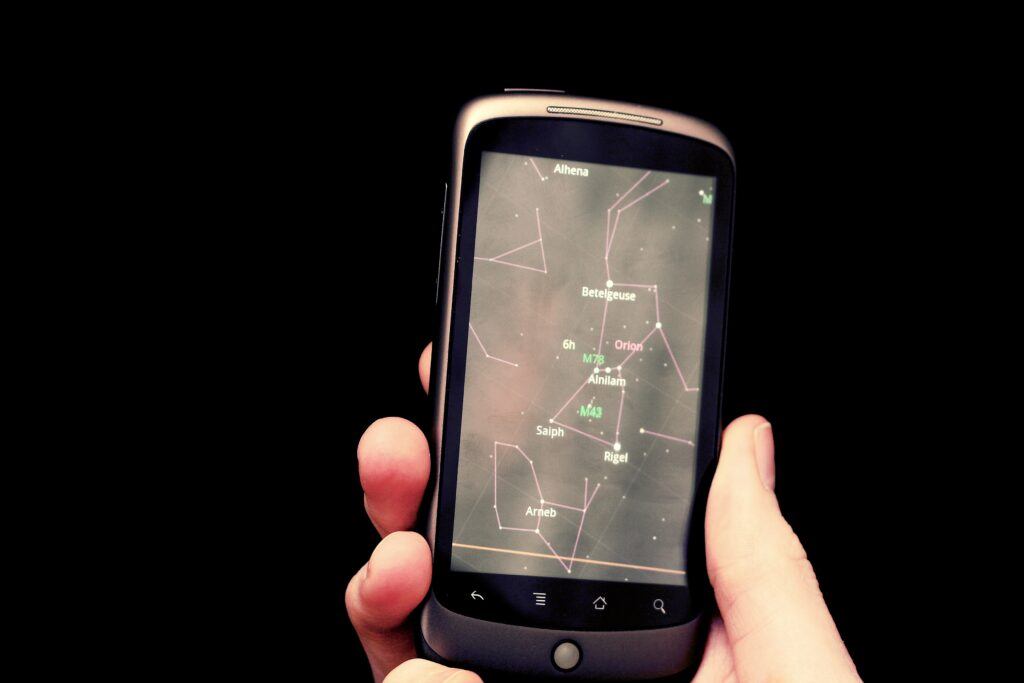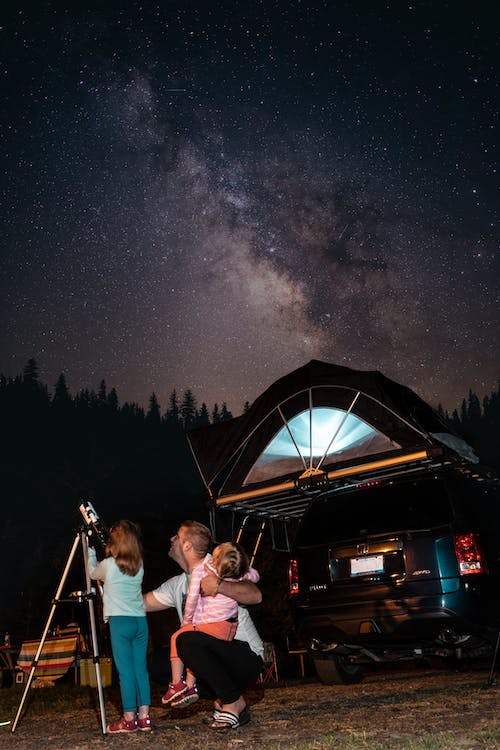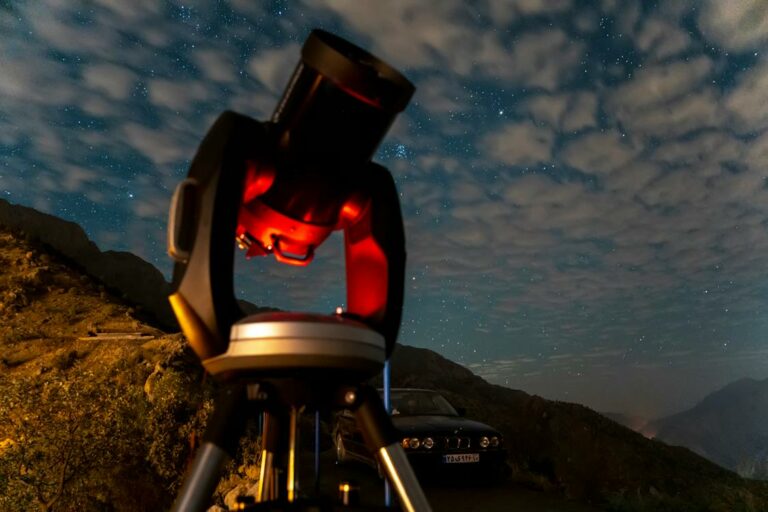Being a parent gives us a sense of legacy and an urge to pass down to future generations the valuable insights we have gained about life. Learning about stargazing for families instills in our children a passion for science, education, and a deep appreciation for nature.
In this article, we will explore how stargazing for families and astronomy is a fun and educational activity. We will discuss why astronomy is important and the benefits it offers. We will also provide tips on getting started with stargazing, engaging in astronomy-related activities, and encouraging children to develop a passion for astronomy.
Why Practice Stargazing for Families?
Astronomy is Important
By studying the stars, planets, galaxies, and other celestial objects, we can learn about the origins and evolution of the universe, the forces that shape it, and the fundamental laws of nature.
Astronomy also has practical applications, such as navigation, timekeeping, and communication.
Moreover, astronomy can inspire curiosity and wonder about the natural world, encouraging children and families to appreciate the beauty and complexity of the universe.
What are the Benefits of Stargazing for Families?
Astronomy can provide a fun and engaging way to learn about science, math, and technology. It can also encourage critical thinking, problem-solving, and creativity.
Stargazing and astronomy-related activities can promote a sense of wonder and curiosity about the universe, fostering a lifelong love of learning.
Stargazing for families creates shared experiences and memories that can last a lifetime. By exploring the cosmos, families can deepen their understanding of the world around them and their place in the universe.
Tips for Getting Started
How to Find a Good Viewing Location
Ideally, the location should be away from bright lights and urban areas, which can interfere with visibility. A clear and open view of the sky is also important.
National parks, rural areas, and campsites can be excellent locations for stargazing.
It’s also important to consider weather conditions, as cloudy or rainy skies can hinder visibility.
By choosing the right location, families can maximize their chances of seeing celestial objects and having an enjoyable stargazing experience.
Equipment Needed for Stargazing
While stargazing can be done with just the naked eye, having the right equipment can enhance the experience.
A telescope is the most common piece of equipment for stargazing, and there are many options available to fit different budgets and skill levels.
Binoculars can also be a useful tool for stargazing, as they are portable and can provide a wider field of view.
A red flashlight can be used to see in the dark without affecting night vision, and a star chart or astronomy app can help identify constellations and other celestial objects.
Warm clothing, blankets, and chairs can also help make stargazing more comfortable.
How to Find Constellations and Other Celestial Objects
Finding constellations and other celestial objects can be a fun and rewarding part of stargazing. One way to identify constellations is to use a star chart or astronomy app, which can show the position of stars and planets in the sky.
Another method is to use the “star-hopping” technique, where you start with a familiar star and move to nearby stars to find the desired constellation. Some constellations, such as the Big Dipper, are easy to spot and can be used as a reference point for finding others.
Binoculars or a telescope can also help locate celestial objects that are too faint to see with the naked eye.
Stargazing for Families Tips for Staying Comfortable
Stargazing sessions can last for several hours, so it’s important to stay comfortable and prepared. Dressing warmly in layers can help regulate body temperature, as temperatures can drop significantly at night. Blankets, hats, and gloves can also help keep you warm.
It’s also important to stay hydrated by drinking water or hot beverages. Snacks such as trail mix or energy bars can provide a quick source of energy.
Using a chair or reclining seat can help prevent neck and back strain from looking up for extended periods.
Finally, taking breaks to stretch, move around, or use the restroom can help prevent discomfort and fatigue.

Activities to Encourage Learning and Engagement
Keep a Stargazing Journal
Keeping a stargazing journal can be a fun and educational way to document your observations and experiences. A journal can include notes on the date, time, and location of your stargazing session, as well as the weather conditions and any notable celestial objects you observe.
You can also include sketches or drawings of constellations, planets, and other objects.
Writing down your thoughts and feelings can help deepen your appreciation of the night sky and the wonders of the universe.
Over time, your journal can become a record of your stargazing journey and a source of inspiration for future sessions.
By keeping a stargazing journal, families can create a lasting memory of their stargazing experiences.
Participate in Citizen Science Projects
Participating in citizen science projects can be a rewarding way to contribute to scientific research while enjoying the night sky. Citizen science projects allow individuals and families to assist professional astronomers in observing and cataloging celestial objects.
Projects may involve observing and recording the brightness of stars, tracking the motion of planets, or identifying and classifying objects in the night sky.
Many citizen science projects are available online, and some can be done with just a pair of binoculars or a telescope.
Participating in citizen science projects can help families learn about astronomy and the scientific method, while also making a valuable contribution to the field of astronomy.
Learn About the History of Astronomy
Learning about the history of astronomy can help families appreciate the long and fascinating human journey of observing and understanding the cosmos.
Astronomy has been practiced for thousands of years, and many ancient cultures had detailed knowledge of the night sky.
Families can explore the history of astronomy by reading books, watching documentaries, or visiting planetariums and science museums.
Learning about the contributions of famous astronomers such as Galileo Galilei and Isaac Newton can also provide inspiration for aspiring stargazers.
Incorporate Technology into Stargazing
Technology can enhance the stargazing for families experience and provide new opportunities to explore the universe.
Apps and websites such as Stellarium, SkyView, and NASA’s Eyes can help families identify celestial objects and learn about their properties.
Telescopes and binoculars equipped with cameras can allow families to capture high-quality images of celestial objects. Night vision goggles can help families see faint objects that are invisible to the naked eye.
Finally, remote-controlled telescopes can be operated from a computer, allowing families to view celestial objects from a different location.
Incorporating technology into stargazing can provide a new level of engagement and excitement for families, while also encouraging an interest in science, technology, engineering, and mathematics (STEM) fields.
Astronomy is a fascinating and rewarding pursuit that can be enjoyed by families as a shared activity. By exploring the night sky and learning about the wonders of the universe together, families can develop a deeper appreciation for the beauty and complexity of the natural world. Astronomy can also help children develop important skills such as critical thinking, problem-solving, and creativity.

Andrew
With years of experience and a passion for exploring the cosmos, I want to be your go-to destination for all things celestial. My mission is to bring the wonders of the universe to your fingertips and demonstrate how the art of stargazing and telescope therapy can nurture not only your astronomical curiosity but also your mental health. Explore the cosmos with me and discover the profound connection between the night sky and your inner peace.








+ There are no comments
Add yours